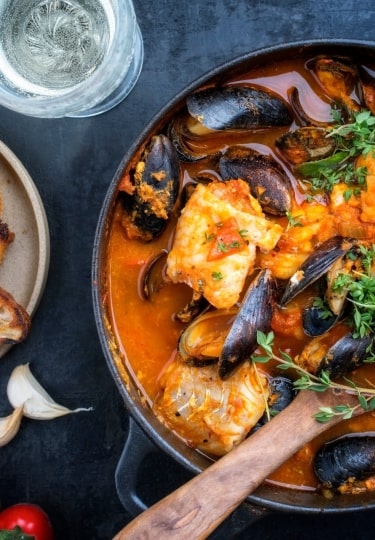Corsican food blends influences from two of the world’s great cuisines: French and Italian.
You’ll also find the gastronomy on the Mediterranean’s fourth largest island reminiscent of any territory fortunate enough to have this sea lapping at its beaches. Beyond those regional influences, Corsican cooking has that emphasis on ingredients that you expect from the Italians, and the French’s alchemy of flavors.
For all these familiar elements, this mountainous island with its unique history stamps its dishes with an unmistakable provenance. There’s pork from the free-ranging boar and pigs snaffling the chestnuts planted by former rulers, or the remarkable variety of wine, thanks to the island’s impressively varied terroir.
Through the hearty stews and soups, game-filled ravioli, and fragrant biscuits, travelers to the island come to understand Corsica intimately through its island kitchen. Read on for the ultimate Corsican food guide.
Honey
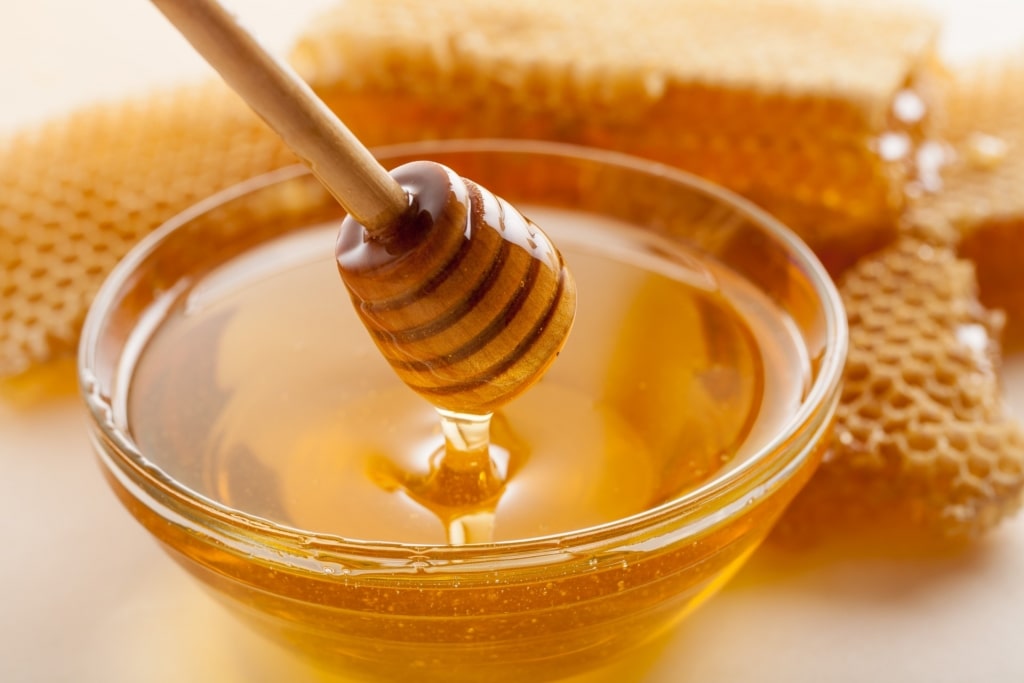
Honey
The “mele di Corse”, or honey of Corsica, is a distinctive culinary product of the island. It’s the result of the island’s varied landscape, from its high pastoral plateaus to the wildflower-speckled banks of its glacial lakes.
The history of beekeeping on the island stretches back as far as its ancient viniculture. Over the centuries, it was not unknown for the islanders to use their delicious honey to pay off the latest invading horde.
Whether it’s from the aromatic coastal clementine groves or the maquis-covered inland gorges, the resulting honey offers an expression of each particular area.
For commercial purposes, the honey is typically divided up into six different types: Printemps, Maquis d’été, Maquis de printemps, Miellat du maquis, Châtaigneraie, and Maquis d’automne.
The flavors found within each golden and amber jarful run the gamut from cocoa to liquorice. Arrive in September and be sure to make a beeline for the town of Murzo and its annual honey festival.
Fish
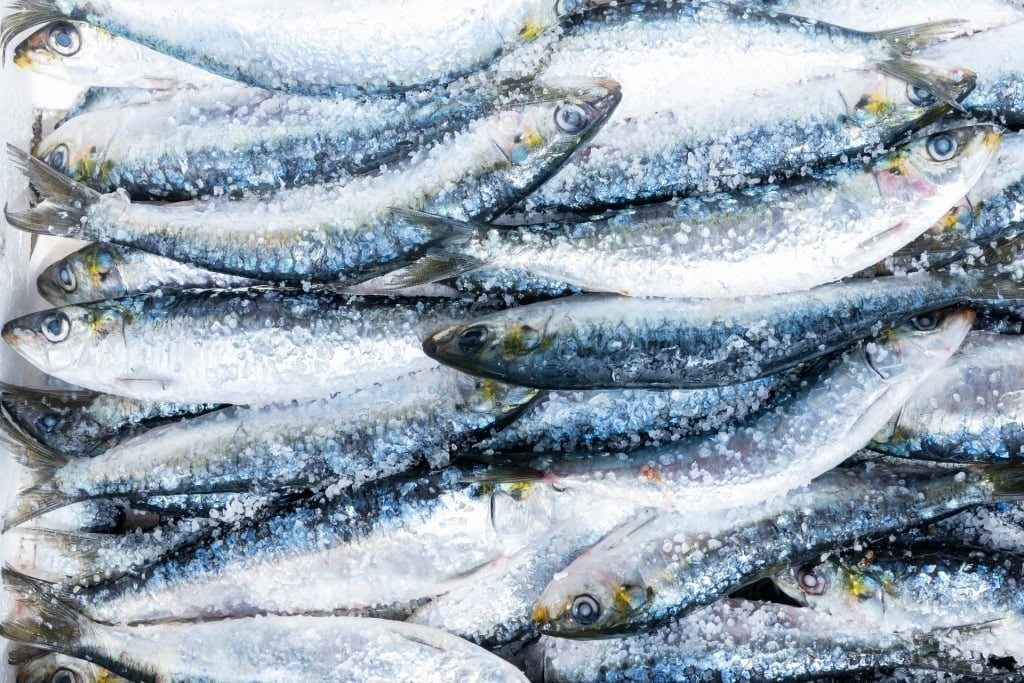
Sardines
Lapped on all sides by the glittering blue waves of the Mediterranean, Corsica has long been nourished by the sea. Amid the abundance hauled from the depths by its fishing boats, you’ll find that island favorites include sardines, sea bream, anchovies, red mullet, and langoustine.
While you’ll often find these simply grilled, with only herbs, butter or oil added, there are recipes that speak more eloquently of the island’s history.
Baccalà incu e cee e l’uva secca, for example, is a Genoese recipe involving salt cod served with chard and raisins. Its flavors recall a time when medieval Corsica was ruled by that powerful Italian republic.
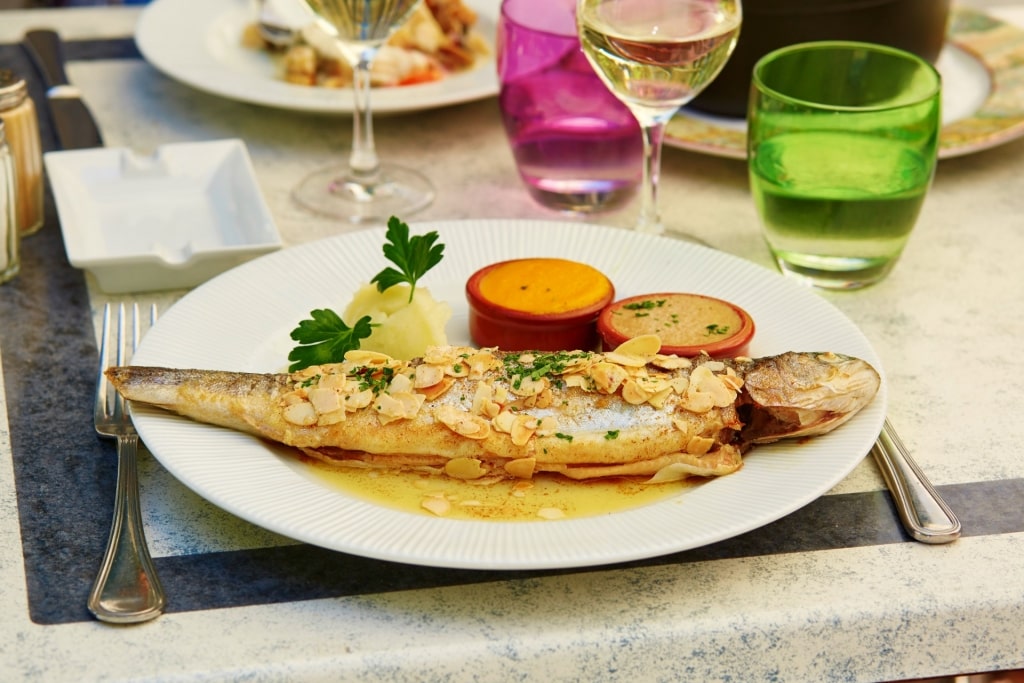
Trout
Eels and trout are also popular, fished from the freshwater lagoons and rushing rivers respectively. While the eels are typically roasted or served as a rib-sticking stew, the trout are often cooked over hot stones or served with a light and fresh brocciu cheese sauce.
For devotees of oily fish, be sure to try torta d’anchjuve e di brocciu which marries anchovies with brocciu cheese in a singularly delicious fishcake.
Cured Meats
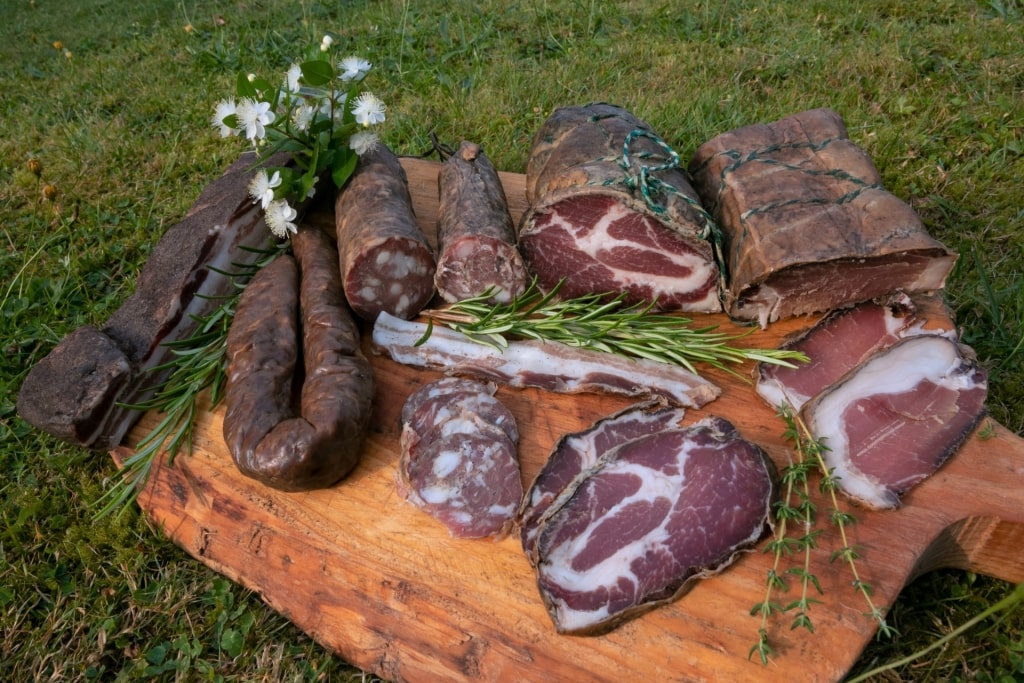
Cured meat
One of the pillars of Corsican cuisine is its cured meats, primarily those made of its chestnut-stuffed porcine agents.
Amid this selection of meats, often served up on sun-splashed tables to go with your glasses of rosé, there’s a quartet of sausages you should pay particular attention to (and purchase for well-traveling souvenirs or gifts).
The island’s signature sausage is figatellu. It’s scarce during summer in France, but come the colder seasons you’ll find this dried and smoked liver sausage, usually seasoned with garlic and herbs, grilled and sliced into warming dishes like lentil soup.
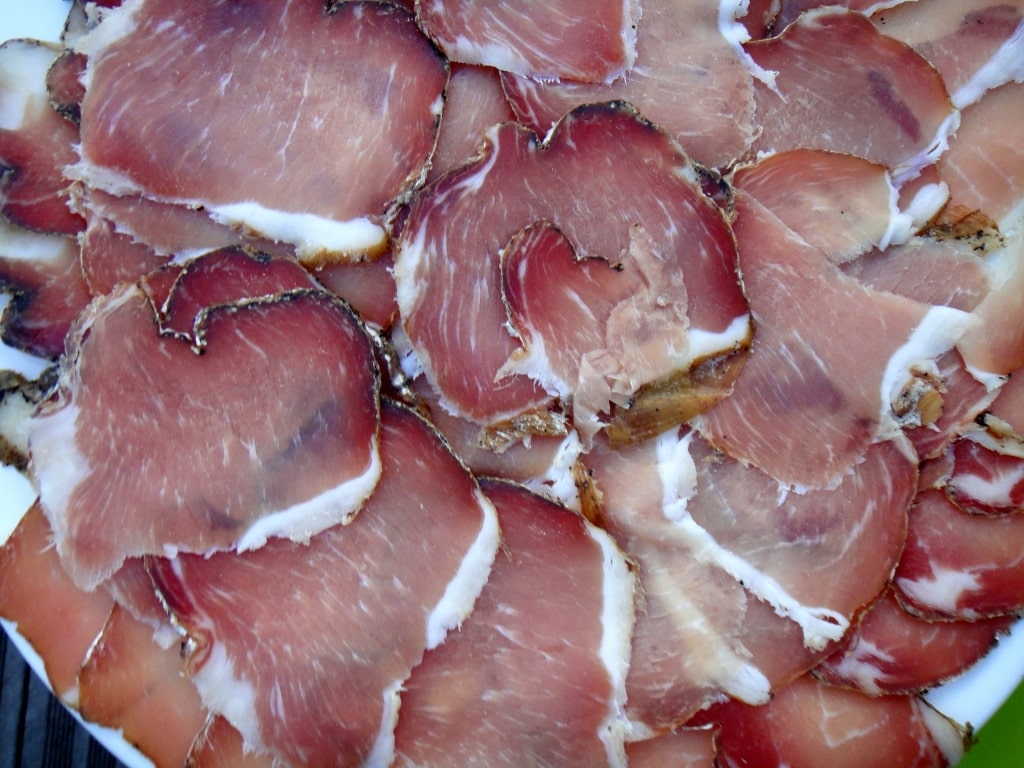
Lonzu
Lonzu is a smoked and salted sausage made from pork tenderloin, while prisuttu is a cured ham that’s aged for a year to deliver a beautiful depth of flavor (not unlike Italy’s prosciutto).
Finally, another sausage with Italian swagger is coppa. This thinly cut pork shoulder is a classic of the peninsula, but when made in Corsica it has its own distinctive edge.
Read: Insider’s Guide to Ajaccio
Civet de Sanglier
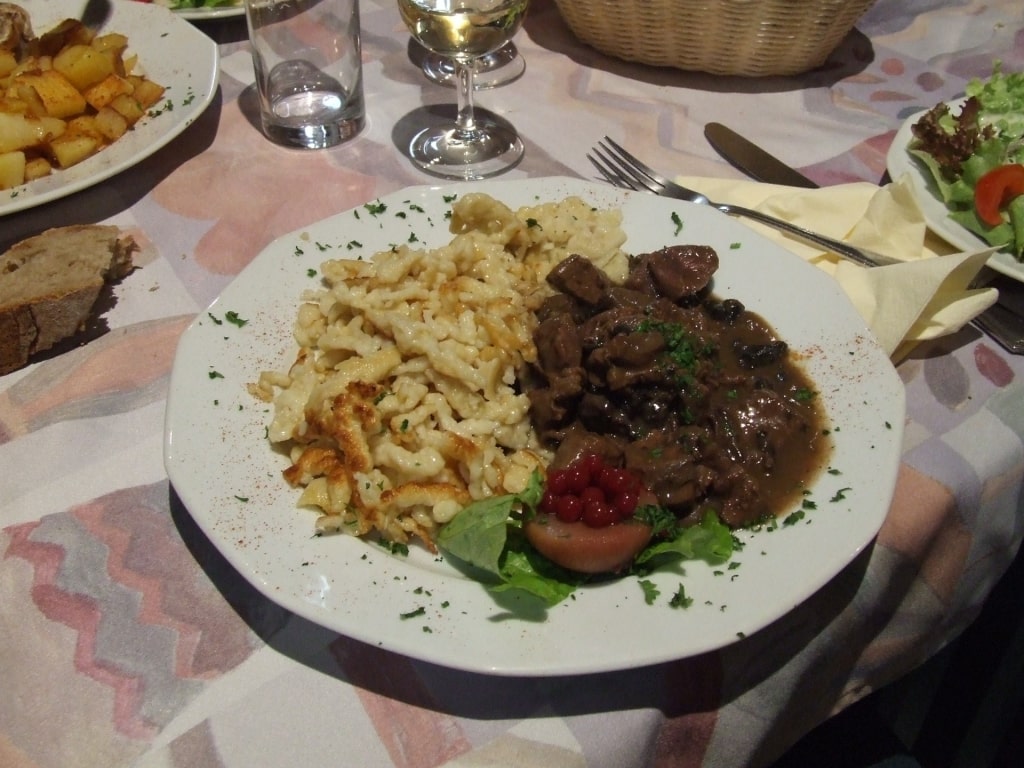
Civet de Sanglier Photo by sprohon on Flickr, licensed under CC BY-SA 2.0
The Corsican equivalent of the English “jugged boar”, civet de sanglier is a delicious game stew with wild boar as its central ingredient.
The “civet” part of the name indicates that this recipe would normally include the blood of the animal. For modern tastes, the blood is typically replaced by red wine and added liver.
Boar fortunate enough to be wild on Corsica would have found the island something of a piggy paradise. When the Genoese held sway for about 500 years in the late medieval period, they replaced the disappointing cereal crops with flourishing chestnut woodland.
The resulting cascade of chestnuts has come to define much of Corsican cuisine. And the flavor that this chestnut-rich diet imbues to the pork elevates this delicious game stew. Take this winter favorite into a new dimension of delight entirely by pairing it with an earthy, fruity Corsican syrah.
Corsican Cheese
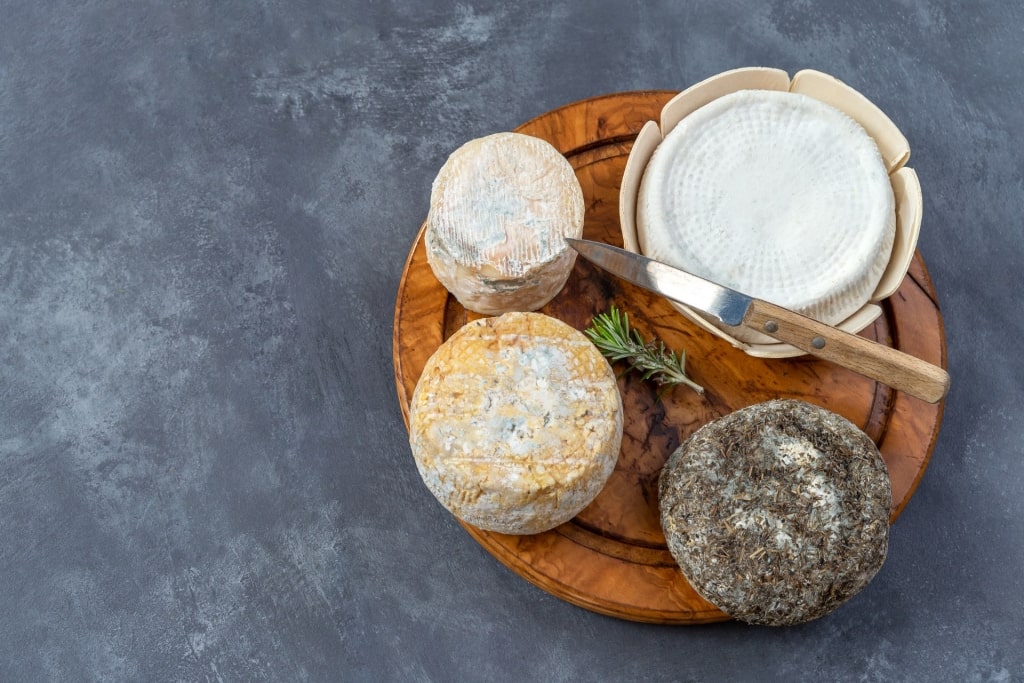
Corsican cheese
You’ll find a predominance of sheep and goat’s milk cheeses in Corsican food, indicative of the island’s scrubby, rugged nature. Today there are cows on the island, as you’ll discover when you come across them relaxing on Corsica’s beaches.
Back to the cheese. The most prevalent of Corsica’s cheeses is its milky and creamy sheep’s cheese called brocciu.
Despite its relatively benign nature, there is an interesting quirk to brocciu cheesemaking, where the whey is returned to the cheese rather than being removed, as is more typical.
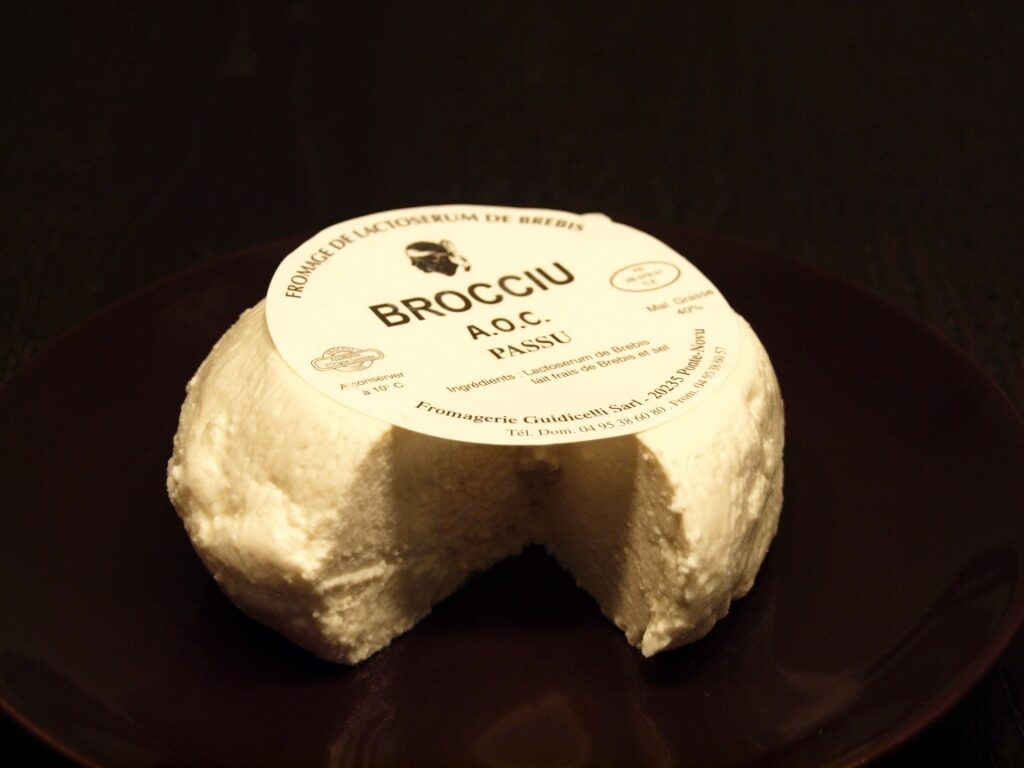
Brocciu pasu Photo by Pierre Bona on Wikimedia Commons, licensed under CC BY-SA 2.0
You’ll find its unassuming yet always welcome flavor woven into the island’s many cheesecakes, salads, and omelets. Find its mature version, brocciu pasu, for something a little spicier—brocciu from the wrong side of the tracks.
Reaching back to when the Romans ruled the island, cabrettu is a cheese made in a young goat’s stomach. This ancient cheese coagulates with the rennet in the goat’s stomach, a process that also imparts a characterful and gamey flavor.
Niulincu is a washed rind raw goat or sheep’s milk cheese made on the rugged, northern Niolo Plateau. Strong and irresistibly salty, niulincu can be purchased young and more mellow, although at any age it’s a winner when sampled with Corsican white wines.
Finally, venaco is a washed rind cheese the color of crème brûlée. Named for its lovely origin village in the island’s heart, its robust flavor and intriguing texture are best matched with a full-bodied red.
Fiadone
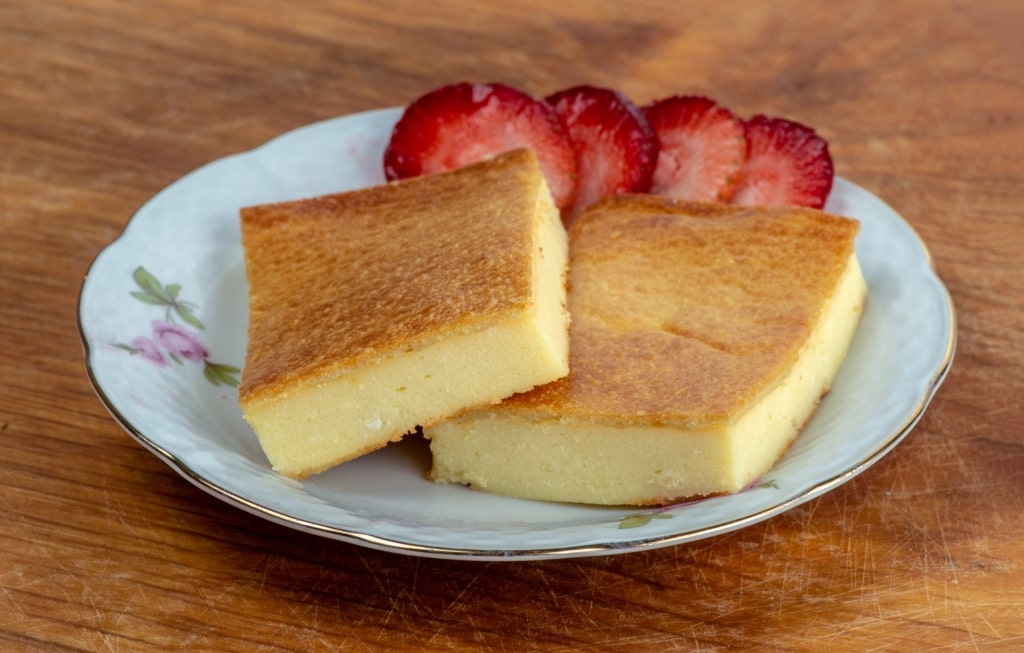
Fiadone
Corsican desserts often involve a triumvirate of ingredients: brocciu cheese, the presence of citrus, and those plentiful chestnuts.
Fiadone, a slice of Corsican food’s sweeter side, is no different. This beautifully smooth brocciu cheesecake is made zingy with lemon zest. Often served in a chestnut leaf, fiadone has been a mainstay of events like Easter and New Year, although, so popular has it become, that you’ll be able to find it in Corsica’s fragrant patisseries all year round.
Pair it with a glass of bracing local eau-de-vie and you have the ideal conclusion to any Corsican feast.
Read: Best Things to Do in Corsica
Fritelli Castagnini
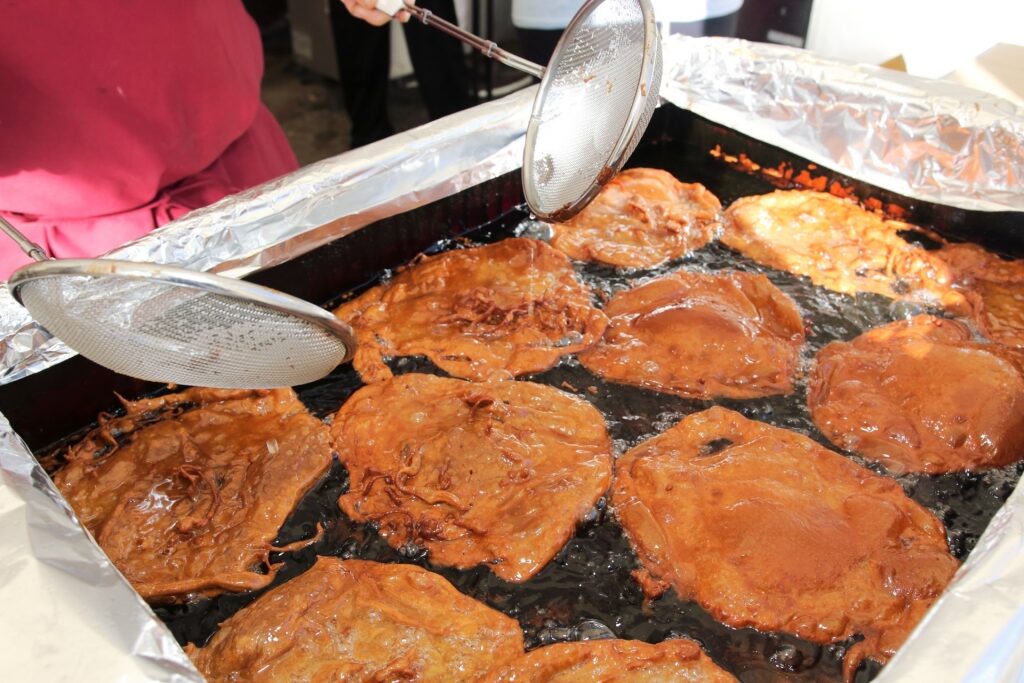
Fritelli castagnini
Corsican food’s chestnut flour-based delights are multitude. The result of natural creativity on the part of the islanders, it’s also a question of happy oversupply thanks to their traditional drying technique which sees the nuts last for up to several years.
Of the DOC-certified chestnut flour morsels available in Corsican food, perhaps its most instantly accessible iteration is the fried fritters known as fritelle castagnine. These are nutty and slightly sweet, and you can usually find a street vendor to hand you a warm cone of them in the main towns around the island.
It’s even easier to find them during the two annual festivals held in honor of Corsica’s beloved chestnuts. Beyond the simple fried flour version, there are also savory fritelli castagnini filled with sausage and—what else—creamy brocciu.
Aziminu
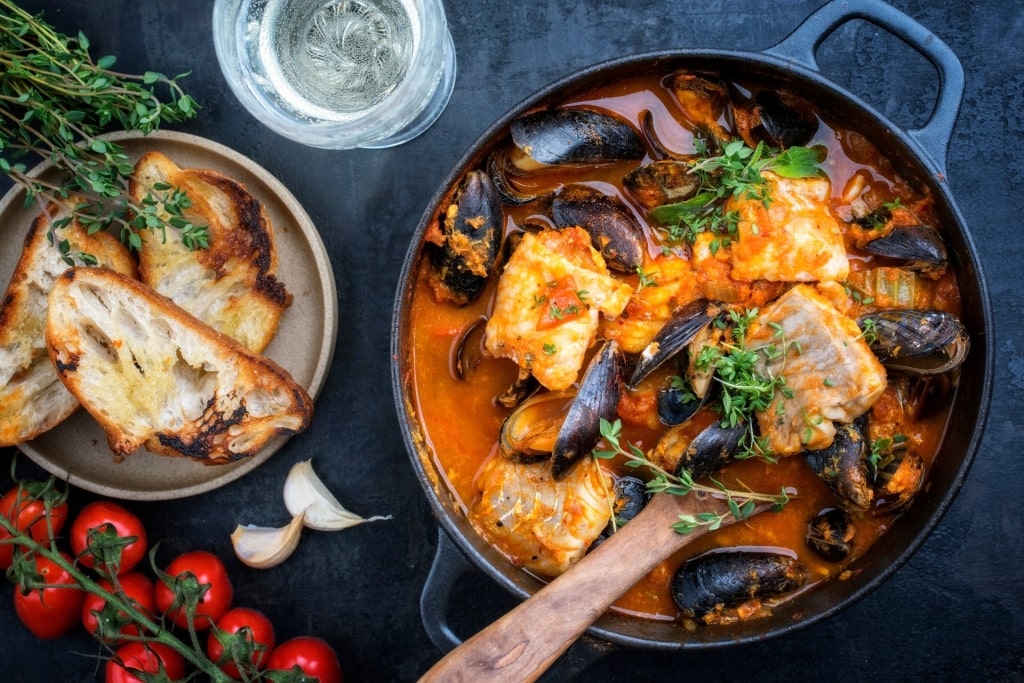
Aziminu
While fishermen everywhere have devised clever recipes to help use up their catch, it’s clear that aziminu is a version of the famous bouillabaisse from Marseilles. That French recipe has roots reaching back to the ancient Greeks, who coincidentally also established some of the first colonies on Corsica.
Featuring a platter of seafood that usually includes red mullet, sea bream, and scorpion fish, aziminu can also feature mussels or, for the more upmarket versions, langoustines.
Served with a herby bowlful of bouillon on the surface of which float croutons, you combine fish and broth for either a memorable starter or epic main.
Veau aux Olives
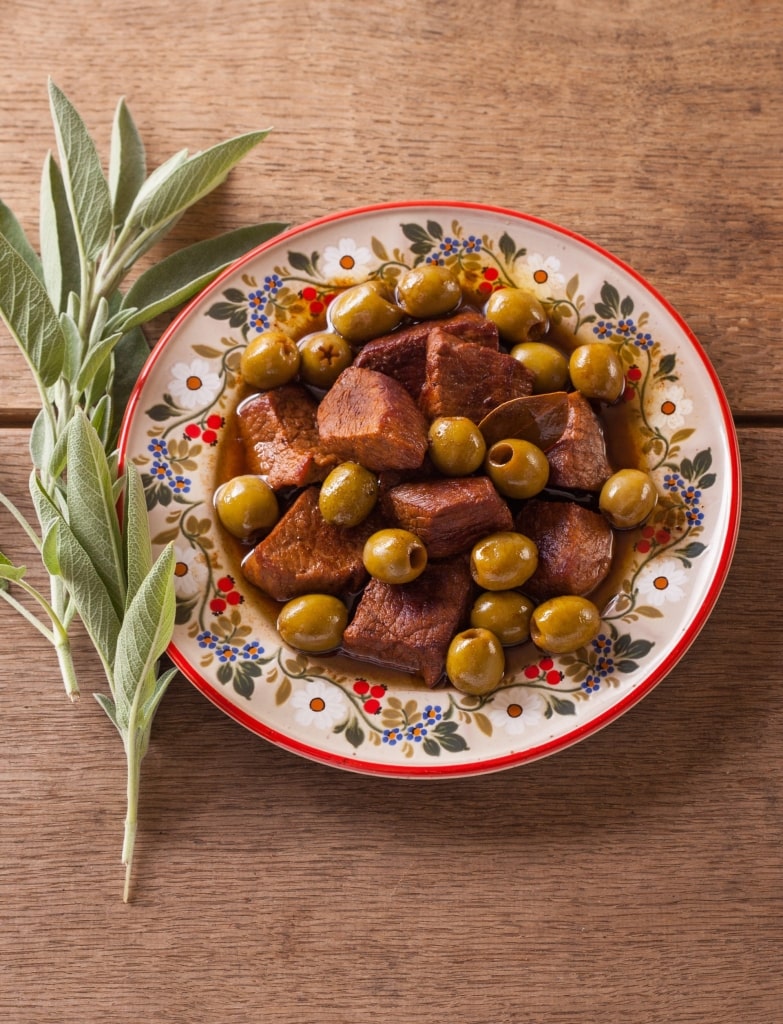
Veau aux olives
A wonderful winter dish for its red wine-infused heartiness, veau aux olives (veal with olives) is a slow-cooked stew of veal, olives, tomatoes, herbs, and red wine.
It’s served with pasta or potatoes or, for something distinctly Corsican, the island’s chestnut flour version of polenta—pulenda.
It doesn’t necessarily have to be cooked with red wine—white and rosé options can be found on Corsica, and especially in the warmer seasons. But a veau des olives simmered in a Patrimonio red is likely to bring out the best in this classic dish.
Patience while cooking is essential when cooking the pieces of veal to perfect tenderness. That long cooking time of course does wonderful work melding the flavors of the bay leaves and other herbs.
Pulenda
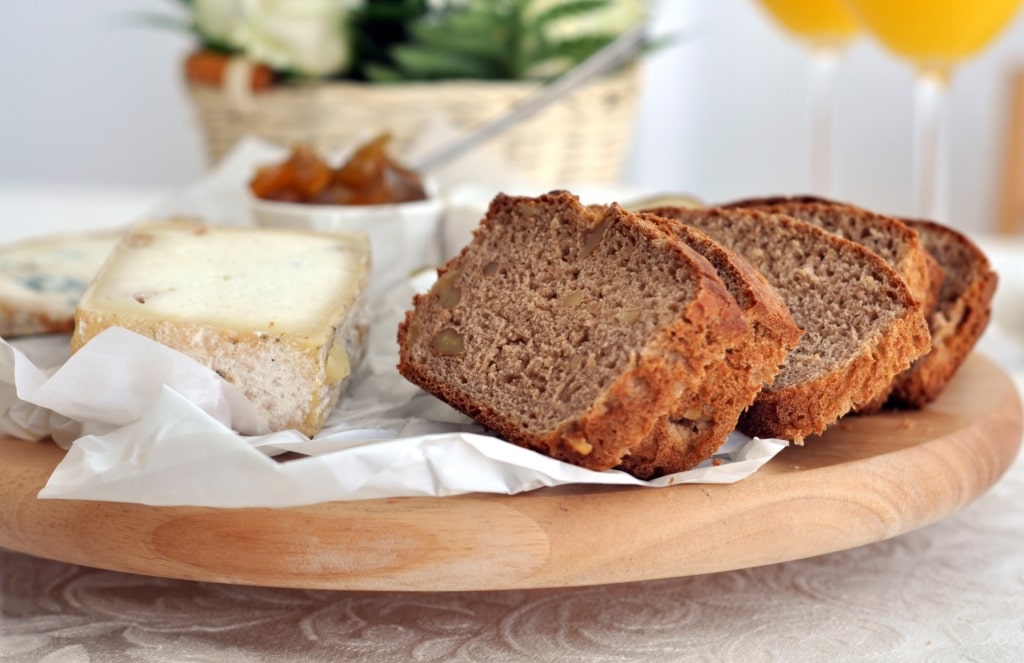
Pulenda
A synonym of polenta, Corsicans put a nutty spin on this Italian favorite by making it from the island’s plentiful chestnut harvest. There are two versions that you’ll come across: either as a creamy polenta equivalent traditionally cooked in a small cauldron, or as a nutty loaf of bread.
The latter is a dense slice of deliciousness, especially sliced warm and served with fried eggs, a board of local charcuterie, or some fresh brocciu cheese for light contrast.
Canistrelli
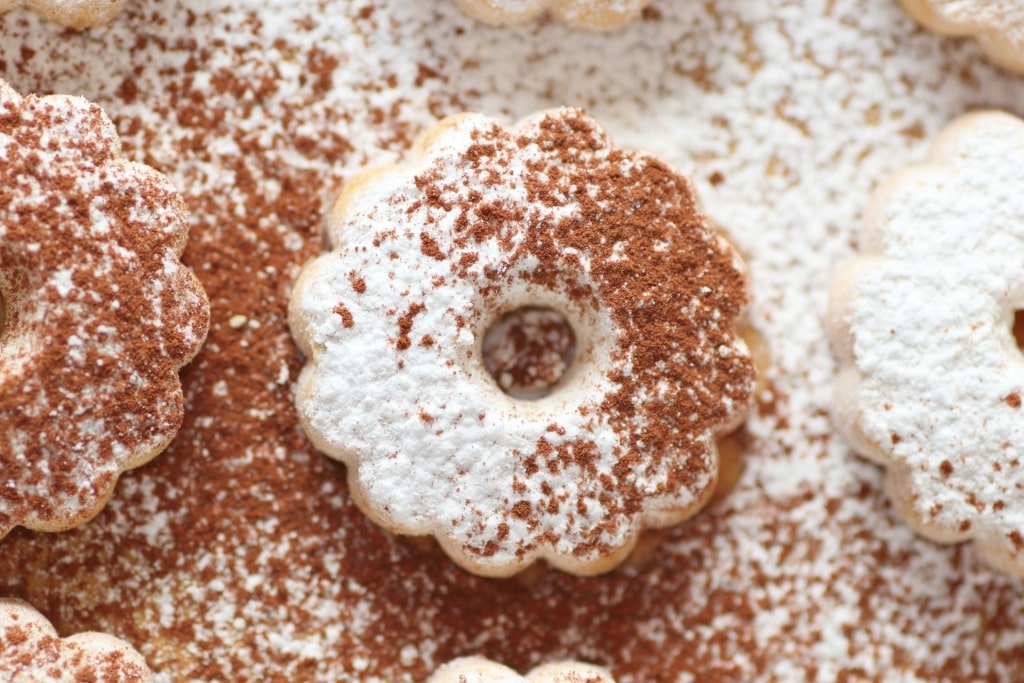
Canistrelli
Canistrelli are fragrant, pale biscuits often served in Corsican cafés or bars. They offer a satisfying crunch even after soaking up your tea or herbaceous local aperitif.
While reminiscent of Italian biscotti, these, the most traditional of Corsican dry biscuits, are very much their own beast.
Created from a simple base of sugar and flour with a little white wine added, canistrelli are found in an array of shapes and flavors. These include lemon, almond, and, this being Corsica, chestnut.
Corsican Wine
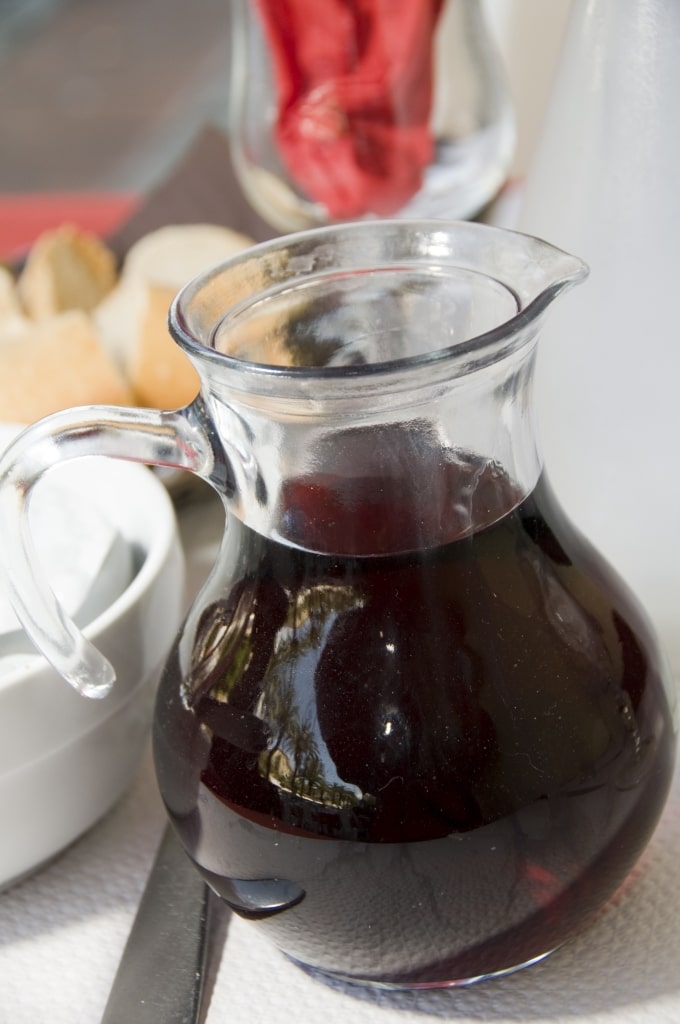
Corsican wine
The Phoenicians planted the first vines on Corsican terroir 2,500 years ago. Over the centuries the island’s wine production has had its ups and downs, but most recently Corsica has been singled out as one of Europe’s most exciting wine destinations.
This would certainly come as a surprise to the Roman poet Martial, who famously referred to Corsica’s output as “black poison”. However, as with most things Corsican, there’s no single representative example. This beach-ringed mountain massif offers a great variety of growing areas and soil types for the creative winemaker to exploit.
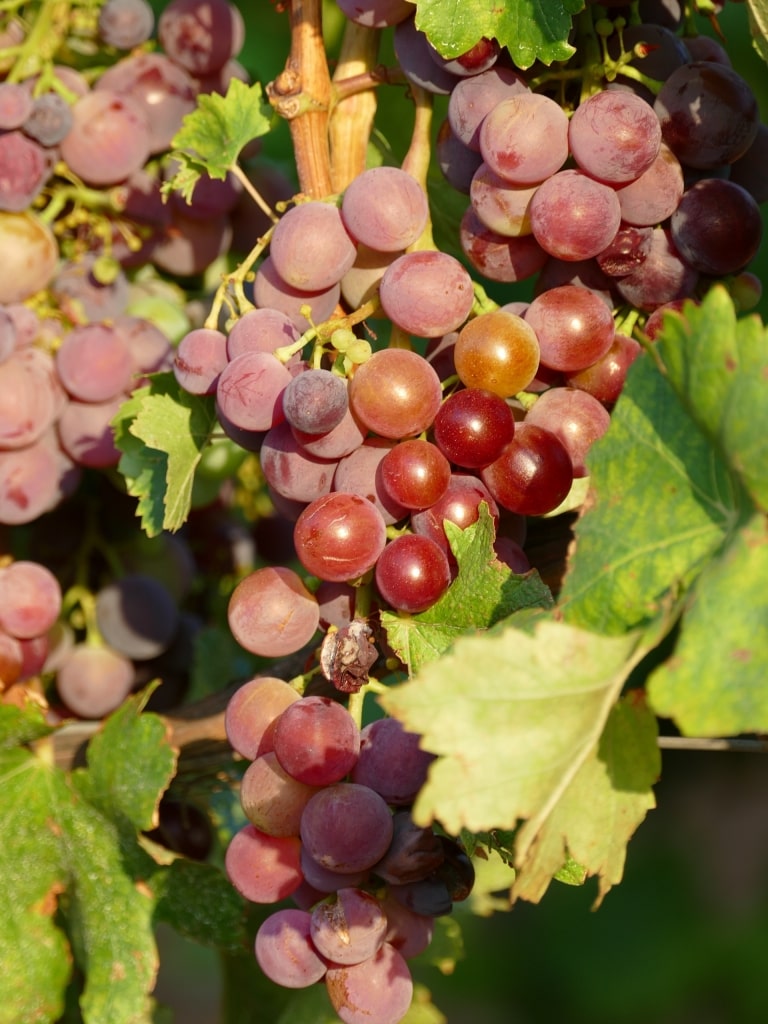
Nielluccio
The three main grapes cultivated here are nielluccio (sangiovese), sciacarello (mammolo), and vermentino/malvasia. With the dusky hills of Tuscany only a short ferry ride away, it’s little surprise that Italian viniculture is the predominant influence. That said, you’ll find a good deal of French grenache and syrah planted here.
Nevertheless, whatever twists its roots deep into Corsican earth expresses a unique flavor that pairs beautifully with your honey-drizzled brocciu or civet de sanglier.
Of particular note are the Vin de Corse AOC and nielluccio-based reds hailing from the northern region of Patrimonio, delivering a mouthful of spice, apricot, and red berries. Also look out for the southern-grown sciacarello with its pronounced peppery aroma and balance.
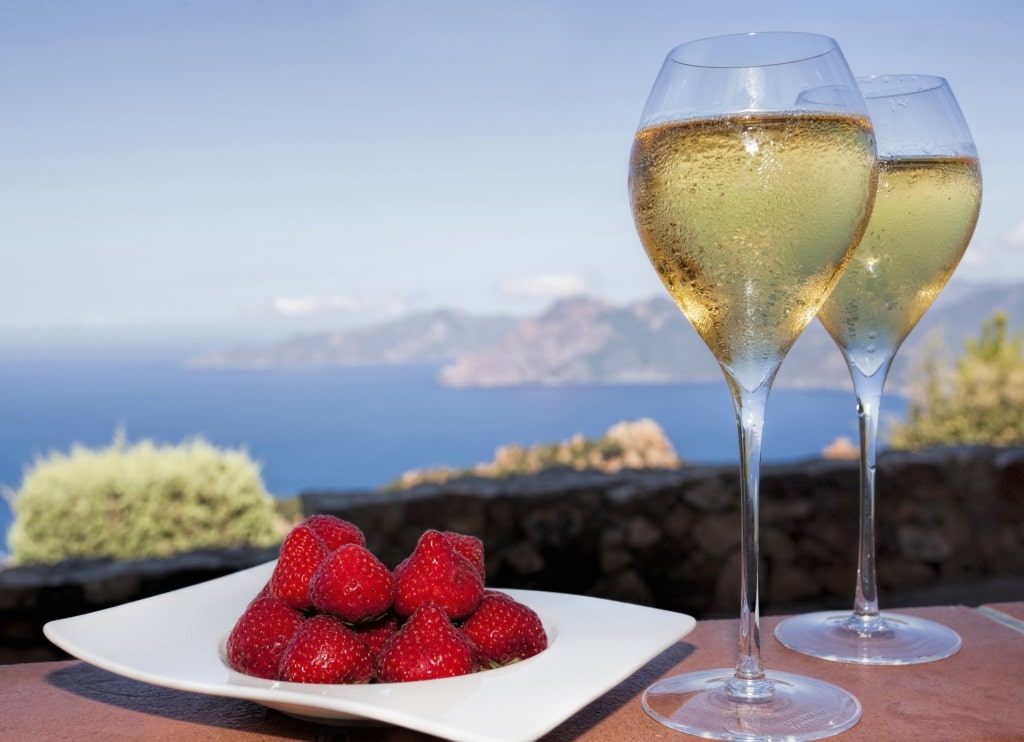
Corsican wine
As the region is so close to Provence, you should also be enjoying glasses of the island’s balanced and flavorsome rosé.
For fans of white, the muscat grape is another traditional Corsican glassful, and the sweet bouquet and freshness of a Muscat Du Cap-Corse AOC is life-giving after a day exploring the island’s dusty and dramatic trails.
Beer drinker? Don’t worry, the Corsicans have you covered. Pietra is a local brew that incorporates chestnut flour into its recipe.
At six percent alcohol by volume, be sure you’re sitting down to drink it, ideally beneath the shade of a chestnut tree with views of the Corsican cliffs.
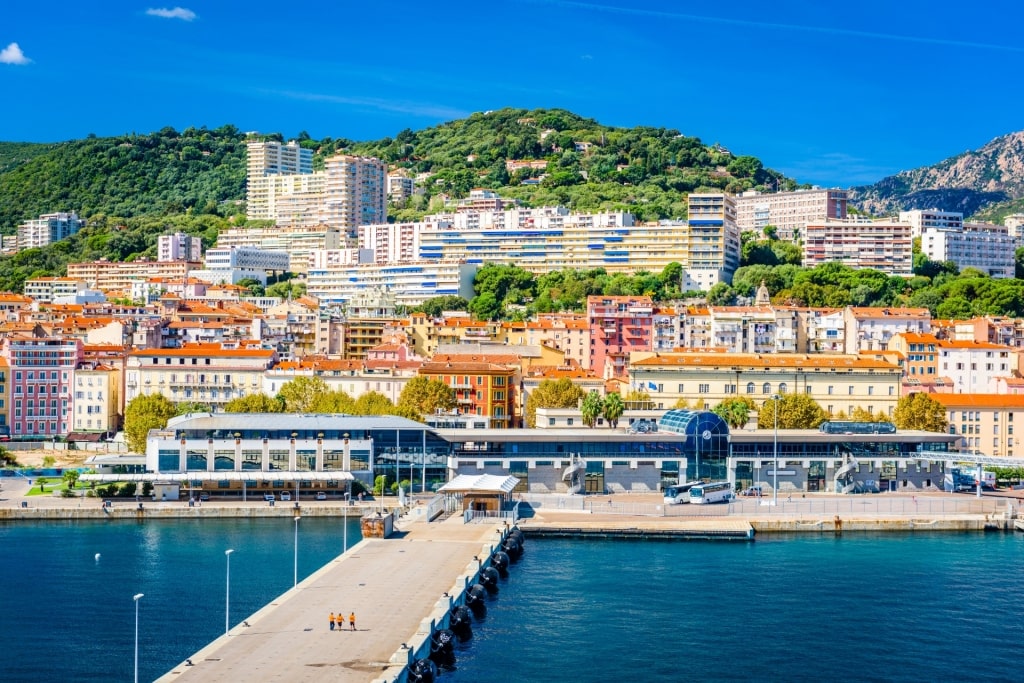
Ajaccio
Taste delicious Corsican food and stroll barefoot along its soft sand beaches on one of Celebrity’s luxurious cruises to Corsica. Browse itineraries on our website and book your next unforgettable vacation.
